This problem has confounded me for more hours than I care to admit. I have isolated the problem so I can replicate it.
library(survival)
library(survminer)
set.seed(123)
test <- data.frame(rnorm(10000)+5,
sample(0:1, 10000, replace = TRUE))
colnames(test)<- c("time", "event")
#sum(test$event) = 4975
survfitted <- survfit(Surv(time = time, event = event) ~ 1,
data = test)
plot(survfitted, fun = "event")
Why does this curve sum up to 100% when only 49.75% experience an event? What would be the right syntax for producing a plot showing the cumulative incidence proportion?
The problem appears to be that the censoring is treated as an event.
